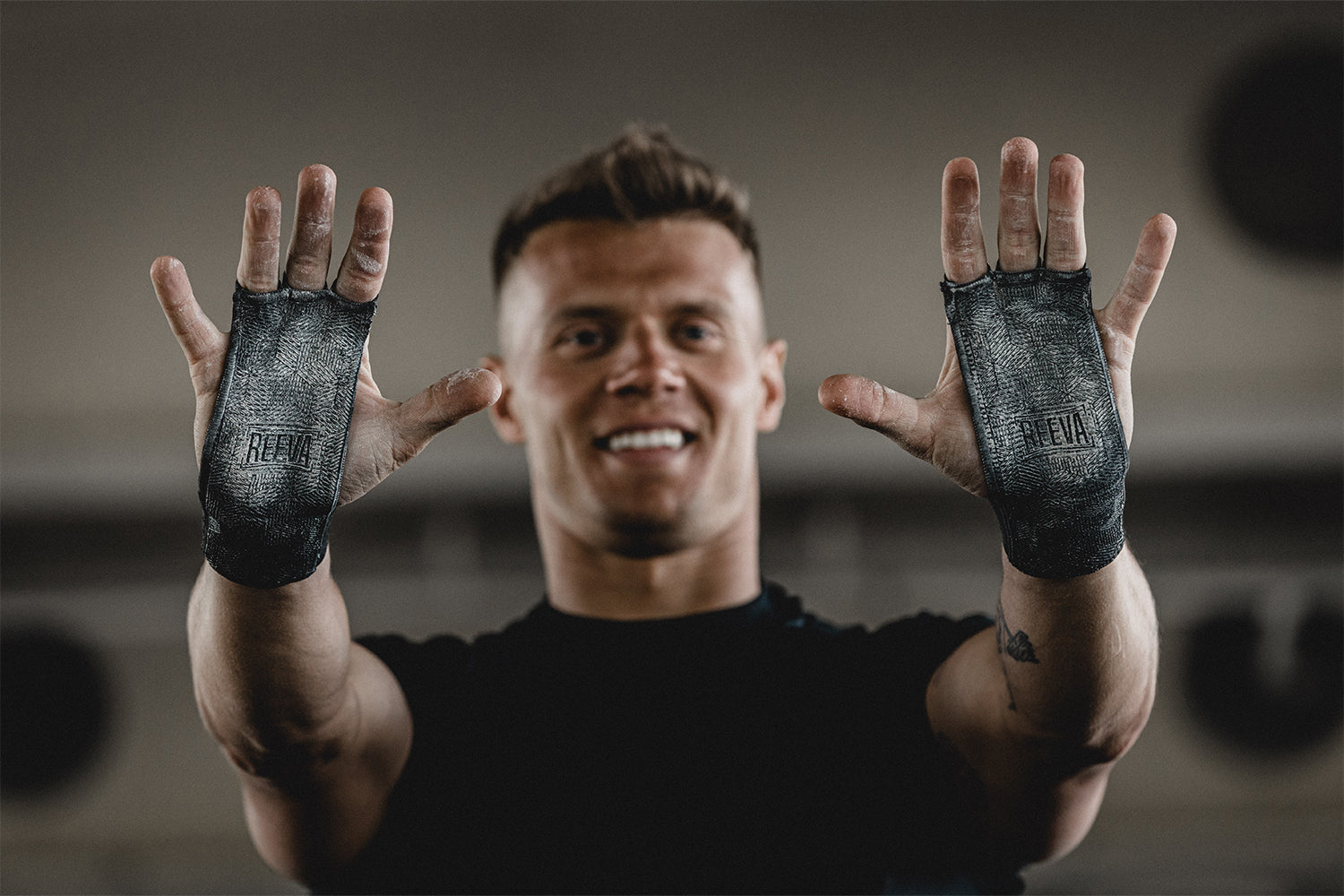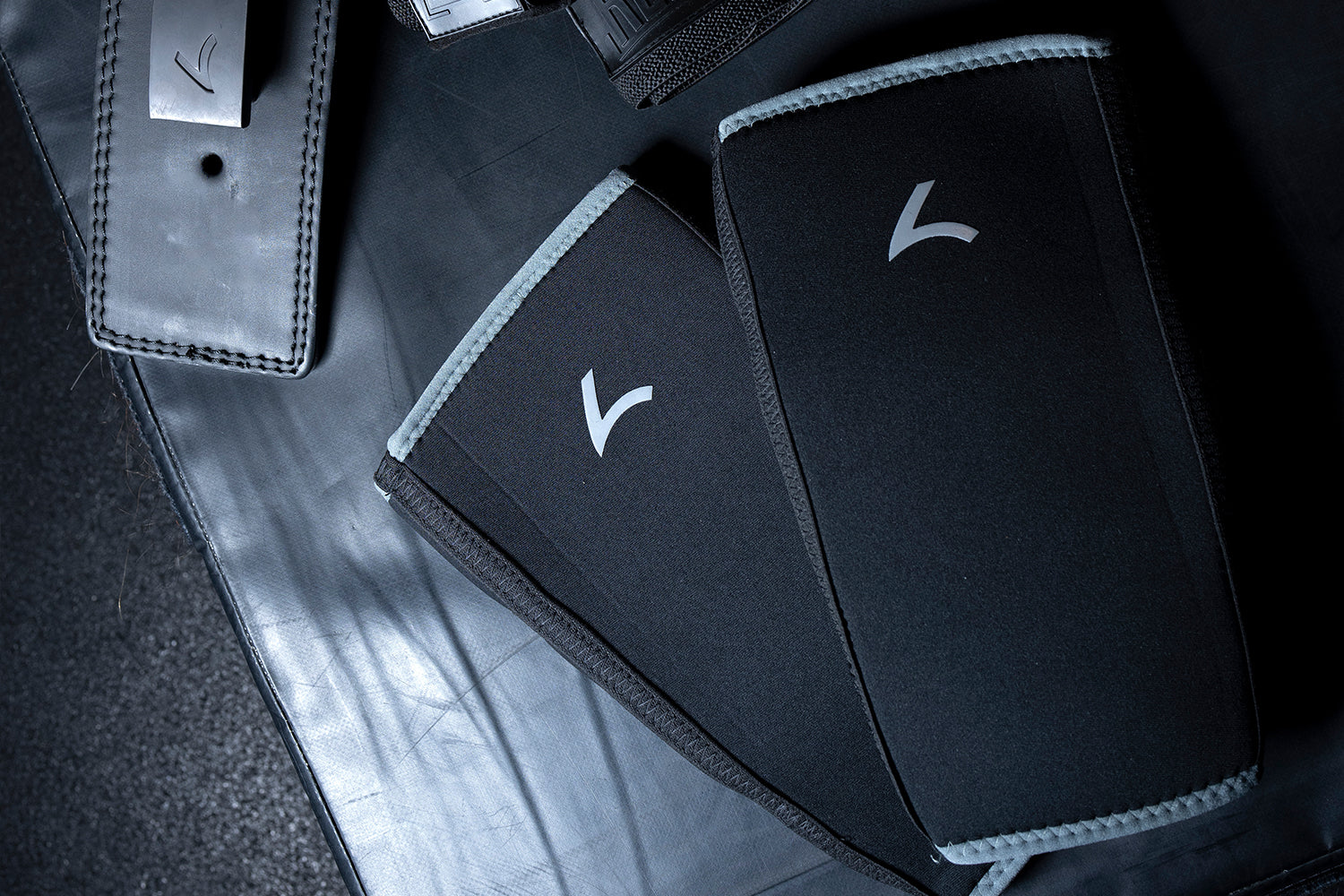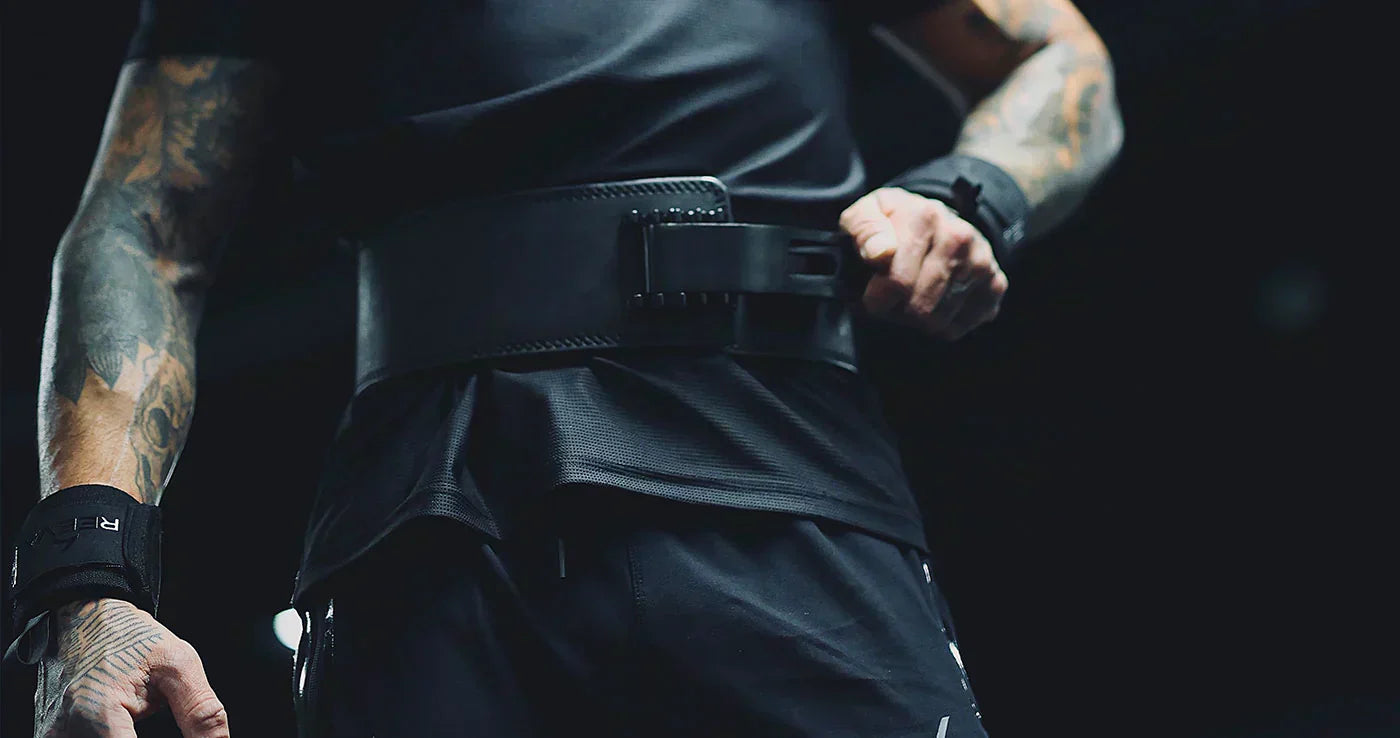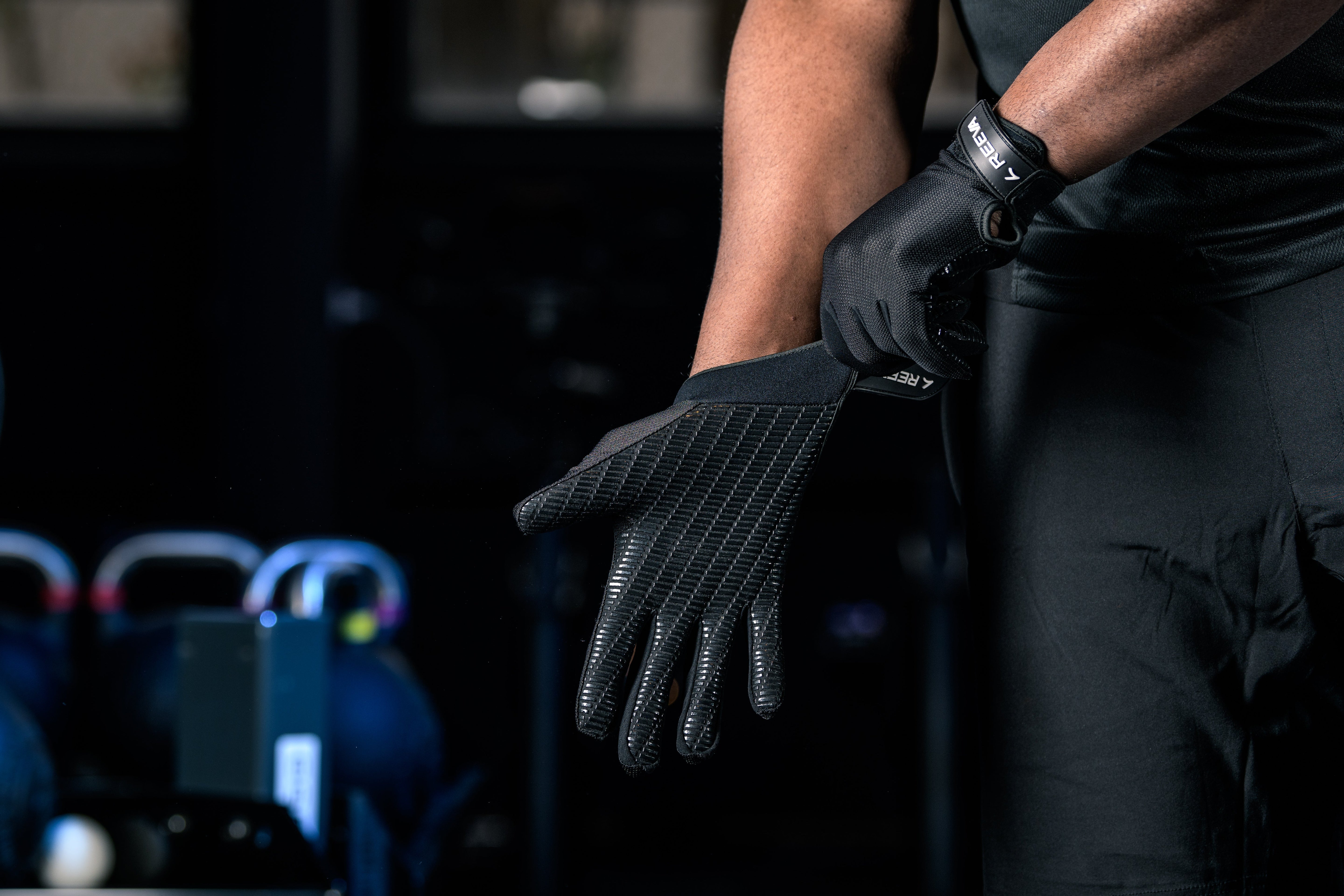Lifting weights takes a toll on your hands – rough barbells, heavy reps, and sweaty palms can lead to painful tears or blisters. As fitness experts at Reeva, we’ve seen how the right gloves protect hands and improve performance. In fact, reviewers note that gloves “can keep your hands protected, help prevent calluses and tears, and even improve your grip during strenuous workouts”. This step-by-step guide will help you pick gloves tailored to your goals and style, comparing alternatives like chalk and straps along the way.
Identify Your Lifting Style and Goals
First, consider what you train for. Powerlifters and strength athletes often focus on maximal lifts with heavy barbells. These lifters value pure grip strength and wrist stability. Many of us who train heavy recommend minimal padding or even no gloves on maximal pulls; instead we favor chalk or straps for grip. For example, fitness experts observe that straps (not gloves) are “designed to provide bar security, enhance grip and support the wrist joint” and are a common aid for powerlifting and hypertrophy sessions. On the other hand, CrossFitters and functional fitness athletes do lots of high-rep, dynamic movements (pull-ups, snatches, etc.). In CrossFit, a lightweight, fingerless glove or grip pad is popular: one review notes CrossFitters prefer “a light and flexible glove for high-repetition workouts”.
Finally, general gym-goers and recreational lifters might do a mix of cardio and strength. They often use gloves to protect against calluses during bench press, rows, or weight circuits. For them, a comfortable half-finger or full-finger glove with moderate support works well. In short: match your gear to your routine – heavy barbell work vs. high-rep circuits vs. mixed workouts.

Pros & Cons: Gloves vs. Chalk vs. Straps
No accessory is one-size-fits-all. Here’s how gloves compare to chalk and straps:
-
Weightlifting Gloves: Gloves add padding and grip so you can lift without raw hands. They improve grip security on sweaty bars and protect skin from tearing. Built-in wrist straps in many gloves also help stabilize heavy presses. The downside is that gloves can reduce bar “feel” and power transfer. Gloves may create a dependency or alter your natural grip, so form can feel different. In practice, we use gloves for pull-ups or moderate lifts, but often avoid them on max deadlifts or cleans where direct feel is key.
-
Chalk (Magnesium Carbonate): Chalk is great for deadlifts, cleans, pull-ups and other lifts requiring raw bar contact. It wicks moisture so your hands don’t slip, maintaining full bar contact and power. Chalk lets you perform complex moves with complete tactile feedback, and over time it actually hardens your skin (calluses naturally decrease). On the flip side, chalk dries out skin and initially promotes callus build-up. Over time the skin toughens, but without glove protection you will feel every burr and pressure point on the bar. Chalk also offers no wrist support – a drawback you can address with separate wrist wraps.
-
Lifting Straps: Straps loop around your wrist and bar to “take your grip out of the equation” for heavy pulling exercises. They let you “lift more weight than usual” by redistributing bar weight off your palms. For example, straps are ideal on maximal deadlifts or heavy barbell rows where grip is the limiting factor. The trade-off is that overusing straps can weaken your raw grip strength over time (you might become “overly dependent” on them). Also, straps aren’t versatile – you generally only use them on big pull movements, not on presses or Olympic lifts.
In summary: Gloves protect skin and add comfort (with modest wrist support), chalk maximizes grip and feel but no padding, and straps excel on heavy pulls. Many lifters even use combinations: e.g. chalk plus gloves for moderate lifts, or chalk plus straps for max pulls. Choose based on your workout: if you want callus-free deadlifts, try straps or chalk; for high-rep bar work, gloves can keep your hands intact.
Key Glove Features to Consider
Once you decide gloves fit your routine, compare these features to find the right pair:
-
Fit & Size: Gloves should fit snugly without cutting off circulation. Too large and they slide (causing chafing); too tight and they’ll cramp or restrict movement. Measure the widest part of your palm (see size guides) to pick the right size. Reeva gloves come in sizes XS–XL for a tailored fit.
-
Grip Surface: Look for palms with textured, sticky, or padded surfaces. Premium gloves often use silicone or rubberized “grip pads” on the palm to prevent slippage. For example, Reeva’s R-Grip™ gloves use a patented silicone palm pad that boosts hold. Studies show gloves with built-in grips keep the bar locked under sweaty conditions.
-
Padding: The amount of palm cushioning varies. Thin or half-finger gloves have minimal padding (more “bar feel”), while heavy-duty gloves may have thick gel padding. Choose based on comfort vs. feedback. We recommend light-to-moderate padding so you’re protected but still feel the bar. Specialized padded gloves can protect during max lifts but may reduce power transfer slightly.
-
Material & Breathability: High-quality leather (or Clarino™ synthetic leather) is durable and provides grip, but can be stiffer. Nylon, mesh or microfiber panels increase flexibility and ventilation. Look for perforations or mesh backs – they wick sweat and keep hands cool during long workouts. Reeva gloves use air-permeable Clarino leather and vented panels to combine durability with airflow. Avoid gloves made mostly of neoprene or foam (those can trap heat and odor).
By balancing these factors – the right fit, a grippy palm, enough padding for your comfort, and good wrist support – you’ll find gloves that suit your training.

Matching Gloves to Your Training
Finally, match the glove style to your specific workouts:
-
Powerlifting/Heavy Lifting: If you focus on squats, deadlifts and presses with maximum loads, you may even skip gloves (relying on chalk/straps to maximize grip). However, if you prefer some hand protection, choose durable gloves with minimal padding. A thick leather palm (like Reeva’s leather models) shields against abrasion, and a secure wrist strap adds stability for bench and squat. For example, heavy-duty lifters often pick “sturdy, durable” gloves for barbell work. In practice, we often swap between chalk and gloves in the power rack – gloves during high-volume sets for comfort, and chalk for triples and singles.
-
CrossFit and High-Rep Training: CrossFit athletes and functional trainers need gloves that breathe and don’t hinder quick movements. Fingerless or half-finger gloves are common so fingers are free to grip. Look for lightweight gloves with thin palms and good ventilation. One expert review even recommends thin, flexible gloves for CrossFit’s high reps. Reeva’s Ultra Grip (microfiber) glove, for example, is made of breathable material and gives full palm coverage without bulk – a good fit for dynamic workouts. Grip pads also protect the palms during pull-ups and kettlebell swings.
-
General Gym Workouts: If your routine is a mix (bench, curls, machines, etc.), choose versatile gloves. Hybrid gloves with half-finger grip and a touch of wrist support work well. They protect against calluses on presses and rows, yet allow dexterity for cable work or dumbbell flows. Even just basic full-finger Reeva gloves handle most gym exercises comfortably. For mixed gyms sessions, prioritize moderate grip and breathability – “gym enthusiasts looking for grip and wrist support” often go this route.
In short, heavy lifters usually favor strong leather-based gloves or straps, high-rep athletes choose lean and airy gloves, and general fitness lifters pick a middle ground. Use the guidance above and your training plan to decide what matters most (for instance, whether wrist stability or maximum bar feel is your priority).
Reeva Glove Options Comparison
Reeva offers two flagship lifting gloves that cover most needs: the R-Grip™ Gloves and the Ultra Grip Gloves. The table below highlights their key differences:
| Feature | Reeva R-Grip Gloves | Reeva Ultra Grip Gloves |
|---|---|---|
| Material (Palm) | Clarino synthetic leather with air-permeable micro-tunnels | Special perforated microfiber (Leather version available) |
| Ventilation | Micro perforations and vents for airflow | High-vent microfibers wick away heat and moisture |
| Grip Pad (Palm) | Patented R-Grip™ silicone pad covering the palm | R-Grip™ silicone pad covers full palm |
| Padding | Thin, flexible padding (keeps bar feel) | Minimal palm padding (focus on grip) |
| Wrist Support | Integrated hook-and-loop strap for extra stability | Integrated hook-and-loop strap for extra stability |
| Best For | General lifting and CrossFit (balanced grip and durability) | High-rep workouts (CrossFit, calisthenics); also available in leather for heavy lifting |
| Price (MSRP) | $29.95 USD | $29.95 USD (non-leather model); Leather model $39.95 |
Both gloves share Reeva’s signature R-Grip pad for superior hold under load. The R-Grip model uses Clarino leather for a classic feel, while Ultra Grip’s microfiber is extremely breathable. (For lifters who want leather, the Ultra Grip Leather version adds clarino covering.) In practice, a powerlifter might pick the leather R-Grip for its robust feel, whereas a CrossFitter might prefer the Ultra Grip’s lighter, airy fabric.

Final Recommendations
Choosing the right lifting glove comes down to your goals. If you lift heavy and value wrist stability, go for a glove with sturdy leather and a firm strap. If you train high-volume or in hot gyms, pick a lightweight, vented glove. Or, if your concern is purely hand protection (for instance, to avoid blisters in daily training), almost any quality gym glove will do.
At Reeva, we’re lifters too, so we design gloves that meet these needs. Our R-Grip and Ultra Grip gloves both back every rep with grip and durability. We’re so confident in their quality that they come with a lifetime warranty, ensuring they’ll last through your toughest workouts.
Ready to protect your hands and lift harder? Explore the Reeva Weightlifting Gloves collection and find the right pair for you. Your hands will thank you, and those PRs won’t feel out of reach. Lift safely, train hard, and Be Better every session.





